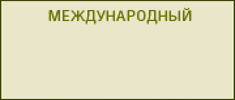List articles
|
This paper presents a comparative analysis of antitrust law with regard to concerted action in the product markets in the specially selected countries. The strengths and the weaknesses of the legislation of each country are identified. A brief overview of the theoretical developments in relation to tacit collusion as an economic category is presented. Law enforcement practice with regard to concerted action in the context of cross-country comparisons is considered. Some recommenda- tions for improving the antitrust laws and enforcement are presented.
Continue...
|
|
|
The aim of the research was the study of Russian and European antitrust laws, as well as its practical application to improve the legal regulation in the field of competitive relations in the Russian Federation and in integration associations, such as the Eurasian Economic Union of the Russian Federation, the Republic of Belarus and Kazakhstan.
To implement the objectives of the study were analyzed in the basic legal framework of antitrust regulation and enforcement mechanisms in the modern field of combating anti-competitive actions of the European Union and the Russian Federation.
The author analyzes the current state of competition policy of the European Union. Identified key concepts, objectives, structure, and sources of EU competition law. A special place in European research takes practice on the application of exemptions for agreements which proves its efficiency by allowing economic operators to significantly reduce the bureaucratic procedures, selfassess whether the subject is entered into an agreement under the antitrust laws or not, but most importantly it gives impetus to the development of innovative contributes to economic and technical progress by combining several building companies. Author analyzed legislation of the Russian Federation in the field of regulation of competitive relations in the provision of certain exceptions to the conclusion of these agreements, the examples of some antitrust cases.
Continue...
|
|
|
At present there are different modeling approaches the level of competition or that subject. The ar- ticle considers the one such approach — a method of type BCG matrix — matrix method statistics — regarding exports and imports of mink skins in world trade, allowing a simulated situation, identify the leading countries and emerging economies in this area of trade. To construct the matrix BCG were used baseline data on exports and imports of mink skins major countries participating in trade mink skins — there are China, the U. S., Canada, Denmark, Finland and Russia. The data were then cataloged and converted into a matrix. After the settlement systems of linear equations according to their share in the trend and share in the export / import of the BCG matrix were constructed separately for export and import of mink skins, after which they were identified leaders and laggards in the field of trade. So in export leader takes the U. S. and China, and import — China and Russia.
Continue...
|
|
|
The purpose of this article is to study the ability of corporate borrowers generate shareholder value for the assessment of bank lending decisions. Methodology for studying the ability of corporate borrowers generate shareholder value allows us to calculate the optimal capital structure for the corporate borrower and the accounting for it when making credit decisions of the bank. Study subject 149 industrial enterprises that operate in the territory of the Russian Federation and whose shares are quoted on the stock exchange in the 2012. In this article we tested the hypothesis of disregarding the bank when making credit decisions corporate borrower the ability to create shareholder value. Identified dynamically developing company. Proved the feasibility of the proposed method in practice. The research is confined to the client base of the industrial sector of economy of the Russian Federation: it will be useful to adapt the material of this article to studying other sectoral markets nationwide. The results of research were used to assess credit decisions of Russian banks. This article constitutes groundwork for organizing effective system of bank lending decisions that guarantees congruity of the bank’s resources and capabilities with demands and requirements of the market it operates on.
Continue...
|
|
|
This article studied on the basis of the existing approaches to assessing the level of dynamic capabilities of the company proposed a model of the author’s choice of study strategies based on dynamic capabilities. The basis of the approach is the comparative assessment of the results of a particular firm and the market in which it operates. The method is based on the assumption that the presence of dynamic capabilities allows the company to more successfully than the overall market, configure the available resources and, consequently, have more efficient than the market average. The study was carried out in the breaking of the specifics of the banking sector of the Russian economy and approved by the example of «Sberbank of Russia». The result of the study is developed tools for choosing the bank’s strategy on the basis of its assessment of the level of dynamic capabilities.
Continue...
|
|
|
In the article describes the author’s method of developing competitive strategy for telecommunications company, allows to formulate the main competitive advantages, to develop a strategy for further development of the telecommunications company. This method is based on the author’s research identify structure of internal competitiveness factors (11 groups 21 factor) of telecom- munication companies, in accordance with recent economic theory of competition. Evaluation of the factors identified by the expert evaluation method and formalization by scale E. Harrington. Highlight primary and secondary groups of factors affecting the competitiveness of the company, identify basic components of the competitive advantage mechanism in the telecommunications market, and influence of it on competitiveness, proposed algorithmic scheme for the development and successful implementation of competitive strategy.
Continue...
|



